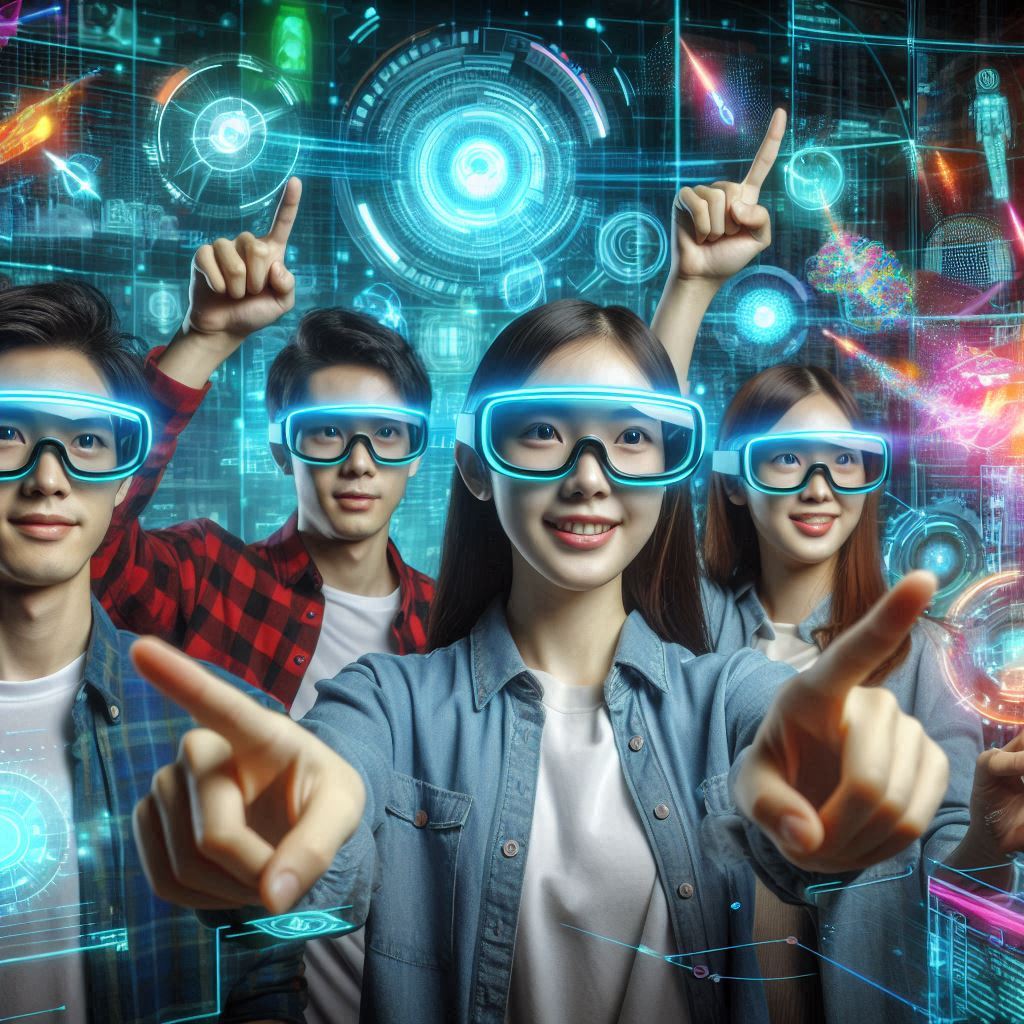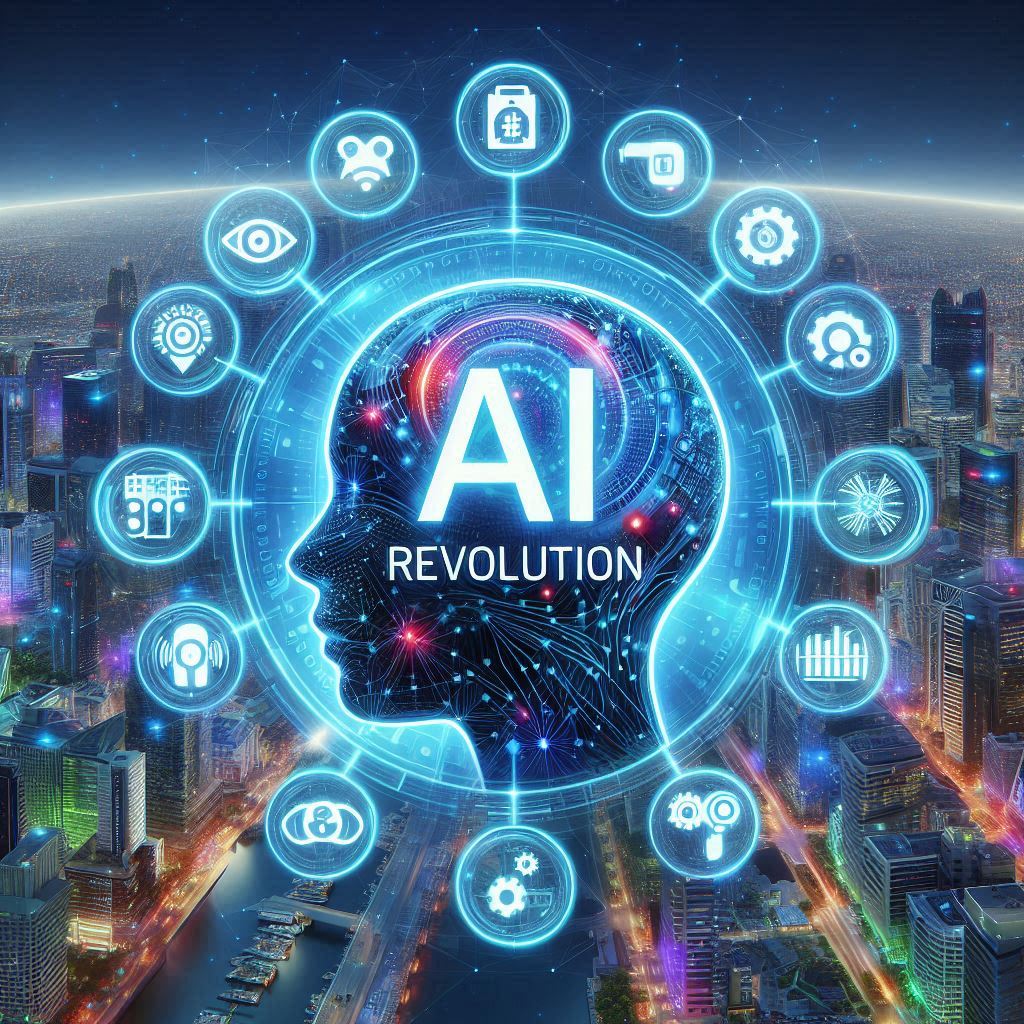Discover the future of AI with our top 10 innovations list, staying informed about the latest developments shaping tomorrow’s technology landscape. Explore groundbreaking advancements in AI breakthroughs and sustainable technologies, staying ahead of the curve in the cutting-edge realm of innovation.
AI Revolution
The global technology industry is rapidly evolving with AI at the forefront of this transformation. As AI matures, it is expected to revolutionize various aspects of our lives, including work, learning, and interactions with the world. Moreover, 10 AI and tech innovations are expected to have the most significant impact in the future.
Let’s check them out.
1. AI-powered Self-Driving Vehicles
AI-powered self-driving vehicles are a revolutionary shift in transportation, using advanced algorithms, sensors, and real-time data processing to navigate roads and avoid obstacles. Companies like Apple, Google, and Tesla are investing in this technology, which uses sensors like cameras, radar, and LiDAR to perceive their surroundings.
Regulatory frameworks
It’s crucial to safely integrate self-driving cars, covering safety standards, liability issues, data privacy and Ethical considerations.

Benefits
- It enhances road safety
- Reduces traffic congestion
- Increases mobility for non-drivers
Advanced safety features
- LiDAR
- Radar
- Predictive analytics
- All of these work together to minimize accidents and ensure passenger safety.
2. Augmented Reality (AR)
Augmented reality (AR) is a rapidly evolving technology that overlays digital information into physical environments and enhances our perception of the world. With advancements in machine learning, computer vision, and natural language processing, AR can respond to our surroundings in real-time and open new possibilities for education, entertainment, and commerce.
Real-World Environments
Augmented Reality (AR) allows players to interact with digital characters in real-world environments, enhances live performances, and enhances customer experience.
Industrial Applications
Augmented reality (AR) is utilized in various industries:
- Manufacturing to enhance operational efficiency and productivity
- Healthcare to improve patient care
- Construction, and warehousing to guide workers
- Gaming and live events
- Retail
- Educational Entertainment

3. GPT-5: Advanced AI
GPT-5 and advanced language models are set to revolutionize content creation by generating high-quality, nearly human-like text. However, it is expected to grasp text, images, videos, and audio.
It offers applications in
- Automated Writing
- Creative Writing
- Storytelling
- Personalized Content
- Multilingual Capabilities

Language Understanding
This tool excels in natural language understanding and generation, enabling it to assist with various tasks, from writing and editing to complex problem-solving.
Ethical Consideration
GPT-5 and other advanced language models require ethical considerations like bias, fairness, privacy, data security, and transparency for responsible development and deployment.
4. Cloud Computing
Cloud computing offers on-demand access to computing resources over the internet, revolutionizing data storage, processing, and management for businesses and individuals.
Scalable AI Solutions
Cloud computing is crucial in scalable AI solutions, offering flexibility, efficiency, and accessibility for resource management, collaborative development, and business growth.
Security and Privacy
As technology evolves, hybrid and multi-cloud environments are becoming more prevalent, offering greater flexibility and security.

Advantages
Key advantages include:
- Scalability
- Cost-efficiency
- Accessibility
Used For
- Data backup
- Data recovery
- Hosting applications
- Managing large datasets
5. Virtual Reality (VR) and Extended Reality
VR and XR technologies are revolutionizing entertainment by providing immersive experiences that blur the lines between virtual and physical worlds, including immersive gaming, live events, virtual theme parks, and immersive storytelling. It spans entertainment, education, healthcare, and professional training through interactive and engaging experiences.
Therapeutic Applications
VR and XR are powerful therapeutic tools, providing immersive experiences for various applications like exposure therapy, pain management, cognitive rehabilitation, and stress reduction. Their therapeutic potential continues to grow as researchers and clinicians explore new applications and interventions.
Advancement
Advancements in XR technology, such as improved headsets and content-creation tools.
Training and Education
VR and XR are transforming training and education by offering immersive and experiential learning experiences that enhance engagement, retention, and skill acquisition.

6. Biometric Technology and AI-powered identification
Biometric technology utilizes physiological and behavioral characteristics like fingerprints, facial, iris, and voice recognition for identification and authentication.
Advancement
As biometric technology advances, privacy and data security concerns remain critical considerations for its widespread adoption.
Ethical and Privacy Considerations
The widespread use of biometric technology raises ethical and privacy concerns, including privacy protection, biometric bias, and informed consent.

AI-enhanced biometric technology Uses
- Border control
- Immigration
- Law enforcement
- Healthcare and Physical security
- Financial services
Security
Biometric technology enhances security and convenience by integrating AI and IoT for multi-factor authentication, improving accuracy and efficiency in various applications.
7. 3D Printing
3D prints, also known as additive manufacturing. It is revolutionizing various industries by creating three-dimensional objects layer by layer from digital models. This technology improves efficiency and customization in the aerospace, healthcare, automotive, and consumer products industries through manufacturing, prototyping, and custom production.
Advancement
The rapid advancement of 3D printing technology is transforming traditional manufacturing processes by expanding its applications and driving innovation.
Sustainable Manufacturing
3D printing supports sustainable manufacturing by reducing waste, energy consumption, and carbon emissions, promoting material efficiency, localized production, recycling, and complex geometries.
Rapid Prototyping
3D printing enables quick prototyping of product designs, allowing engineers and designers to refine concepts before mass production, accelerating design cycles, promoting iterative design, and enabling customization.
Medical Breakthroughs
3D printing has revolutionized healthcare by enabling personalized treatment, surgical planning, and biomedical research on patient-specific implants, tissue engineering, and drug delivery systems.

8. 5G and Edge Computing
5G and edge computing are key technologies for next-generation connectivity, enhancing data processing efficiency, speed, and capacity for advanced applications, thereby supporting real-time applications.
Low-Latency AI
5G networks enable real-time communication between edge devices and centralized AI systems, helping edge inference, real-time decision-making, and interactive experiences.

Real-time Analytics
Edge computing architectures with 5G enable real-time analytics, data processing, predictive maintenance, and dynamic resource allocation.
Smart Cities and Infrastructure
5G and edge computing technologies are crucial for smart cities, as they enable AI-driven applications in urban management, transportation, energy, and public safety.
9. Brain-Computer Interfaces (BCIs)
BCIs, despite being in their early stages, are a significant advancement in enhancing human capabilities and introducing innovative ways to interact with technology. It offers potential in medical, gaming, education, and paralysis patients.
Advancement
Advances in neuroscience, machine learning, and miniaturization are driving the development of more sophisticated and user-friendly BCIs.
The Future of Human-Computer Interaction
BCIs enable hands-free control, natural interaction, and enhanced computer immersion, eliminating traditional input methods like keyboards and touchscreens.
Neurological Treatments
BCIs have the potential to revolutionize neurological treatments and rehabilitation strategies by offering innovative tools for diagnosing, monitoring, and treating neurological disorders and injuries.
Ethical Implications
The widespread adoption of BCIs raises important ethical considerations such as privacy, autonomy, consent, and equity.

10. Space-Based Internet and Satellite AI
Space-based internet, utilizing satellite constellations, aims to offer global internet coverage, particularly in remote areas. Companies like SpaceX and Amazon are developing low Earth orbit satellite networks for high-speed, low-latency internet access.
AI-Powered Space Exploration
AI-powered satellites and space exploration missions enhance autonomy, data analysis, and scientific discovery through autonomous operations, data processing, health monitoring, and planetary exploration.

The Future of Telecommunications
Space-based internet and satellite AI technologies are poised to revolutionize the telecommunications industry, promoting next-generation connectivity, IoT and M2M communication, emerging markets, and collaborations.
Conclusion
Top 10 AI Innovation has the potential to enhance human capabilities across various sectors, including healthcare and entertainment. However, it’s crucial to consider ethical and societal implications as we navigate this technological evolution. By embracing 10 AI opportunities, we can create a future where AI enriches our lives and empowers us for a better world.
